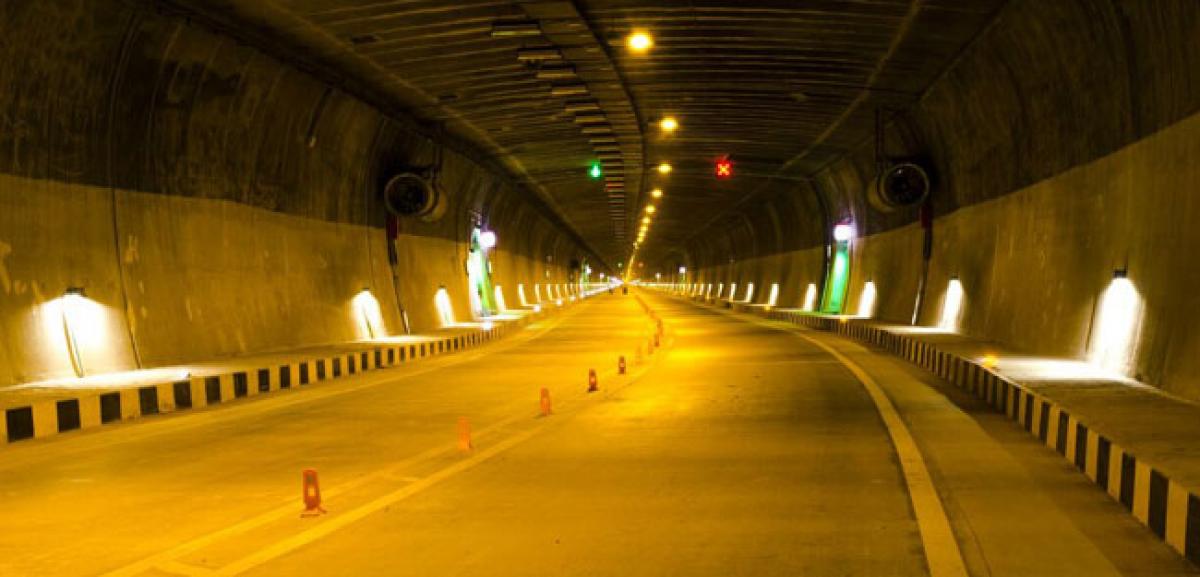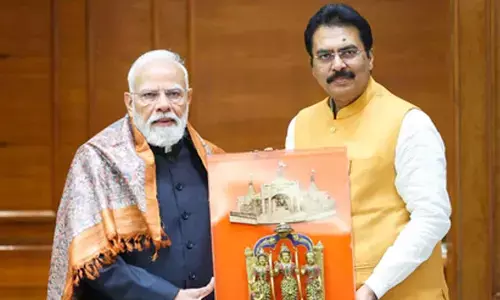How the govt caused the ILFS fiasco

The Infrastructure Leasing Financial Services Company ILFS was established by three government entities Central Bank of India CBI, Unit Trust of India UTI and the Housing Development Finance Corporation HDFC
The Infrastructure Leasing & Financial Services Company (ILFS) was established by three government entities Central Bank of India (CBI), Unit Trust of India (UTI) and the Housing Development Finance Corporation (HDFC).
In due course of time, the Life Insurance Corporation of India (LIC) and the State bank of India (SBI), again both government entities, bought equity in ILFS. At present, the major Indian shareholders of ILFS are these government entities. The ownership of ILFS, therefore, was and wholly remains with the government.
ILFS was financing large numbers of infrastructure projects such as the longest road tunnel in India — the 9-kilometer Chenani-Nashri tunnel linking Jammu with Kashmir. Its contribution to the development of infrastructure in the country cannot be discounted. ILFS raised funds for these projects ingeniously. Anyone who has taken a loan from a bank knows about the debt-equity ratio.
This tells the amount of money that is lent to a company (debt) as a proportion of its own funds (equity). A safe debt-equity ratio is considered to be 2:1 (debt being 2 times the equity). A prudent debt-equity ratio is considered to be 3:1 (debt being 3 times the equity).
The equity provides the safety for the debt. A low debt-equity ratio means that the equity would be wiped out first if the borrower incurred loss, and the debt could still be repaid. A high debt-equity ratio means that the equity would be wiped out quickly in event of a problem, and the debt may not be repaid.
ILFS circuited around the debt-equity ratio ingeniously. Say, ILFS borrowed Rs 75 crore from the financial institutions with an equity of Rs 25 crore. This was at a prudent debt-equity ratio of 3:1. It had Rs 100 crores in its bank account and could take up tunnel-making with this money. But ILFS did not use the money to make the tunnel.
It created another company, say, ILFS Tunnels Limited. ILFS invested the Rs 100 crores as equity in this subsidiary. ILFS Tunnels then borrowed Rs 300 crores from the banks again with the debt-equity ratio of 3:1. Now if we consider ILFS and ILFS Tunnels together, the total debt is Rs 375 crore (Rs 75 crore borrowed by ILFS and Rs 300 crore borrowed by ILFS Tunnels).
The total equity is only Rs 25 crore of ILFS. The true debt-equity ratio, therefore, was 15:1 which is totally unacceptable for any banking. The Finance Ministry and the Reserve Bank of India are both responsible for overlooking the fact that the so-called “equity” in the ILFS subsidiaries was actually “debt” in the books of the parent company ILFS.
The high debt-equity ratio meant that ILFS defaulted when 16,000 crores of its dues were not paid by government entities like National Highways Authority of India for whom it was building infrastructure. ILFS could not service its debt, it seems, because of this non-receipt of dues from the government.
Indeed, there were other issues like inflating project costs, failure of rating agencies to point out this burgeoning debt, failure of Independent Directors to bring this to the notice of the Finance Ministry and RBI. However, my assessment is that these were minor issues. Basically, ILFS seems to be a good person doing a good job of building infrastructure. It became overambitious, took an unsustainable high debt and got stuck.
Now the second part of the story. Why did rating agencies, lending banks and independent directors fail to report the problem at ILFS to the public? The responsibility falls squarely on the shoulders of the Finance Minister. ILFS was controlled by the government through LIC, CBI and HDFC. Government-appointed bureaucrats heading these institutions must be held responsible.
In fact, just as the ILFS began to default on its commitments, the long-standing Chairman of ILFS, Ravi Parthasarathy, resigned and Hemant Bhargava, MD, LIC was appointed Chairman of ILFS. Soon thereafter, he resigned and former LIC chairman SB Mathur was appointed Chairman of ILFS. One government-supported imprudent bureaucrat was replaced by another government-supported imprudent bureaucrat and then by a third government-supported imprudent bureaucrat.
The latter two government-supported imprudent bureaucrats failed to report the imprudence of the former government-supported imprudent bureaucrats at ILFS. My sense is that such machinations are possible only when they have active support of the Finance Minister. The problems building up at ILFS were known to the LIC, and through the LIC to the Finance Minister, but the Finance Minister must have muzzled their voices in his anxiety to keep the infrastructure juggernaut rolling.
R C Bhargava, former director, IL&FS, and chairman, Maruti Suzuki said, “(For) years it was in the knowledge of everyone… that there would be a default (at ILFS).” Alas! The castle was built on sand had to fall, and it did.
Now, why did the well-intentioned infrastructure juggernaut propelled by the Finance Minister collapse? I think the government had good intentions. But this objective conflicted with another objective of the government, which was to push the big businesses and kill the small businesses.
The result was that the ground level economy has floundered. Our GDP growth rate is flat at about 6.9 percent, yet the Sensex is soaring. The flat GDP growth rate means that the real economy is growing at a normal rate. The roaring Sensex means that the big businesses are buoyant. The buoyancy of big business with a normal growth in GDP is possible only if the small businesses are contracting.
Some of the big businesses are located in India. Some are located in China. Those located in China do not need the infrastructure build in India much. Those located in India are concentrated in big cities. As a result, there is little demand for the infrastructure that is being created.
Thus, power companies are collapsing like dominoes. No one wants the electricity they produce. The toll road projects too are in trouble. The National Waterways is certain to collapse. These infrastructure projects are like providing a big house to a person to live — after administering poison to him.
In conclusion, the ILFS fiasco is rooted in the self-contradictory policy of building massive infrastructure along with killing small businesses. This has led to less demand for infrastructure, which led to non-payment of dues by government entities to ILFS, which led to collapse of ILFS.
The ILFS fiasco will affect you and me. The LIC and Mutual Funds have invested our money in this ill-conceived binge by the Finance Ministry to build infrastructure while killing the ground economy. Your LIC policy and your Mutual Fund investment will take the hit, thanks to the Finance Minister.
Author was formerly Professor of Economics at IIM Bengaluru
Woman injured in stabbing attack in Tokyo, suspect at large
Bengal cop booked for murder over mysterious death of woman home guard, SIT to probe case
Staffer recalls horror of 7-kg gold robbery by armed gang in Karnataka’s Hunsur
25-Year-Old Airline Cabin Crew Member Dies At Gurugram Party; Police Begin Investigation
















